
Cryptocurrency is getting a lot of attention, and is being discussed more than ever these days. This type of digital currency is popular not only among investors but also among people who have become acquainted with NFTs (non-fungible token). While some are sceptical of its popularity, others believe it’s the future of money and will eventually replace traditional centralised currency controlled by governments.
It was first introduced by Satoshi Nakamoto in 2009, and Investopedia defined it as “a digital or virtual currency that is secured by cryptography, which makes it nearly impossible to counterfeit or double-spend. Many cryptocurrencies are decentralised networks based on blockchain technology – a distributed ledger enforced by a disparate network of computers. A defining feature of cryptocurrencies is that they’re generally not issued by any central authority, rendering them theoretically immune to government interference or manipulation.”
With the freedom that crypto provides, interest in it has undoubtedly skyrocketed. Today, the most popular cryptocurrencies are bitcoin, Ethereum, and Litecoin, but other cryptocurrencies are gaining popularity as well. Remarkably, the global cryptocurrency market is projected to grow from US$910.3 million in 2021 to US$1,902.5 million in 2028 at a CAGR (Compound Annual Growth Rate) of 11.1% in the forecast period, 2021-2028.
It has also been reported that “Cryptocurrencies have surged so much that their total value has reached nearly US$2.5 trillion, rivalling the world’s most valuable company, Apple, and have amassed more than 200 million users. At this size, it’s simply too big for the financial establishment to ignore.”
Many must be asking the important question of all – Is cryptocurrency really the future we are moving towards to?
As it is, this digital currency has been approved and used by a wide range of businesses, and it’s the only currency accepted for transactions in the Web3 world. With the increasing number and usage of cryptocurrencies, it appears that it’ll be around for a long time, possibly forever. A survey found that 88% of institutional respondents and 75% of retail investors believe that crypto will see mainstream adoption within a decade.

Never in our wildest dreams would we imagine the business world transacting in anything other than fiat currency. However, according to a late-2020 estimate, approximately 2,300 US businesses accept bitcoin as a form of payment for transactions. This demonstrates that businesses are beginning to recognise cryptocurrency as a viable source of revenue.
Why do they do it? Most likely due to the digital payment system, which does not rely on banks to verify transactions, making financial processes quick and easy. Businesses globally can use cryptocurrency not only for transactions, but also for investments and operational costs. In fact, many are waiting for the price of cryptocurrencies to stabilise so that companies can develop more import/export services.
Introducing crypto now may help raise internal awareness of this new technology within the respective companies. It may also help the company position itself in this important emerging space in preparation for a future that may include more central bank digital currencies (there are already nine!). We could say that crypto transactions in businesses are still in their infancy, so companies that join now may be among the first, and far ahead of competitors while reaching new customer groups and increasing profits.
It’s also advantageous to businesses in the sense that certain alternatives are available with crypto that are just not possible with conventional currency. For example, programmable money can ease back-office reconciliation by allowing for real-time and precise revenue sharing.
Furthermore, cryptocurrency may serve as an effective alternative or balancing asset to cash, which may depreciate due to inflation over time. Companies are now discovering that key clients and vendors want to engage using cryptocurrency. As a result, businesses may need to be prepared to receive and disburse cryptocurrency to ensure smooth exchanges with key stakeholders.
Of course, the evolving crypto transactions will not be the same as those that all businesses are accustomed to.
When businesses first consider incorporating cryptocurrency into their operations, they must decide whether to include cryptocurrency on their balance sheets or simply accept crypto-enabled payments. They must be cautious in determining which would best meet the business objectives. As that company embarks on its crypto journey, it has two options:
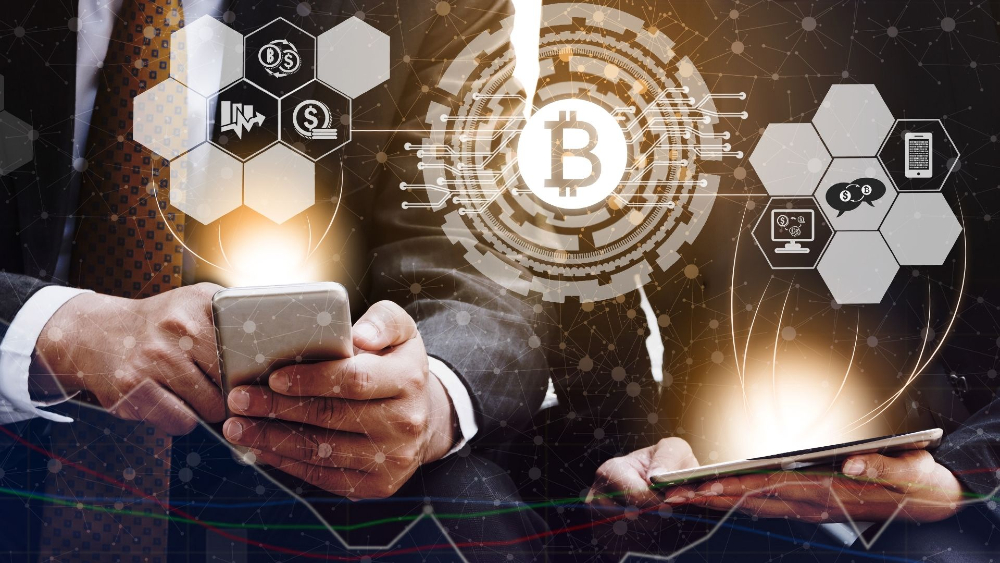
This way, cryptocurrencies received by businesses do not appear on their books because the payment is converted to fiat currency. Companies can pay a fee to have a third-party supplier operate as their corporate agent, receiving or making crypto payments, and then converting them to fiat currency.
The third-party vendor will handle the majority of the technical questions and will manage various risk, compliance, and controls issues on the company’s behalf. Companies must, however, abide by any restrictions imposed by the agency in charge of administering and enforcing the government’s economic and trade sanctions.
For businesses that are unfamiliar with the cryptocurrency market, this is a relatively secure solution. This method does not alter the company’s existing internal functions. It may necessitate the fewest changes across the board of corporate functions and may achieve immediate goals such as attracting new customers and increasing the volume of each sales transaction.
Companies can opt for this path when ready to expand crypto usage in operations and treasury. This entails doing more than just accepting crypto payments. This strategy will significantly increase the company’s profits, but it’s fraught with technical issues that must be addressed first.
Before deciding on this route, consider the following questions:
Choose this path only if the company is truly prepared to face the challenges and risks that come with it.

Companies that are considering using cryptocurrency in their operations should have a clear understanding of why they’re doing so. Businesses that want to start using cryptocurrency must first understand how to do so. To ensure a smooth transaction, the following steps should be taken:
Once the company has determined the best cryptocurrency and wallet to use, it can also be used for other purposes other than as a mode of payment for customers. For example, using cryptocurrency to pay employees or suppliers.
Nonetheless, it’s important to note that the use of crypto for business purposes presents a number of opportunities as well as challenges. As with any unexplored territory, there are both unknown dangers and strong incentives.
The advantages of using cryptocurrency are substantial, particularly in the realm of virtual businesses. Here are some of the benefits of cryptocurrency:
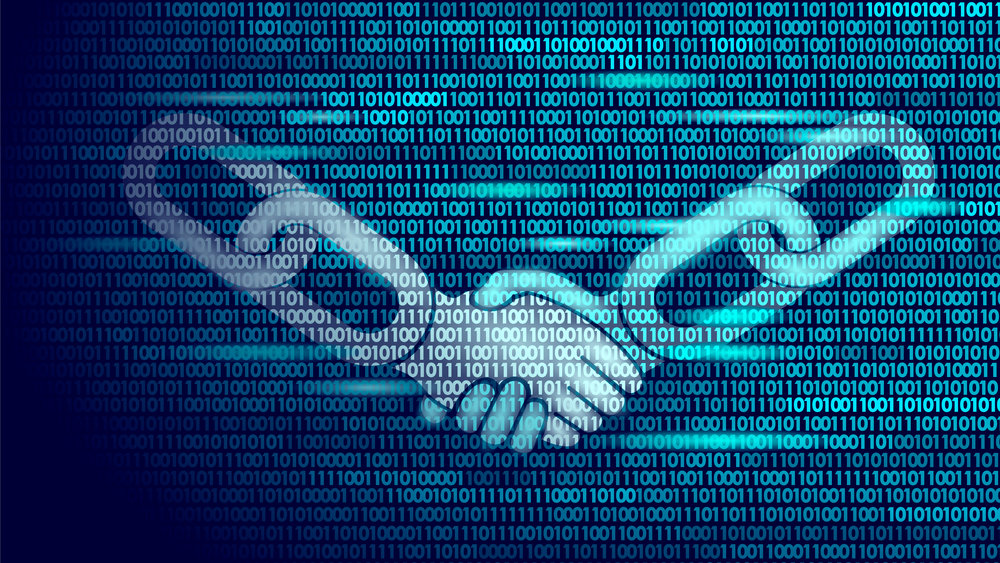
Read more: Crypto Winter Is Here: What Does This Mean For The Market, And Will There Be Any Job Opportunities?
Although cryptocurrency has numerous benefits for businesses, there are a few potential downsides to be aware of, such as:
To recap, here are the benefits and drawbacks of businesses using cryptocurrency.
| The Benefits | The Drawbacks |
| 1) Decentralised 2) Private and anonymous 3) Company growth 4) Fast transactions 5) Low transaction fee 6) Investment and income potential | 1) No established bodies 2) Highly volatile 3) Sole responsibility 4) Complex set-up processes 5) Not widely accepted 6) Susceptible to scams |
Regardless of investment stance, there’s a strong possibility that cryptocurrency will have an impact on companies around the world and the future of business transactions. Let’s take a look at some of the ways cryptocurrency will affect business and essentially answer why the cryptocurrency is the future.

It’s no surprise that more businesses are beginning to accept cryptocurrency as a means of conducting business. Let’s look at some real-life examples of formerly-traditional businesses which have already adopted cryptocurrency.
(Source: euronews.com)

Cryptocurrency has the potential to be one of the most significant disruptors in the global business process due to the technology that powers it. One thing is certain: anyone can get involved with cryptocurrency. There are few to no restrictions on investing in or trading cryptocurrency. And as more people become involved in this space, events in the physical realm may slow down.
Another method of disruption is the use of cryptocurrency, which has the potential to destabilise the traditional banking system. This is because transfer fees are minimal when sending cryptocurrency coins since authorisation and authentication of transfers are no longer required. In this regard, banks also can’t compete with the anonymity and privacy provided by cryptocurrencies.
Cryptocurrencies provide features and functions that are changing (and possibly improving) the way we do things, but there are risks to consider, particularly as cybersecurity evolves. It’s worth noting that cryptocurrency is not immune to security breaches. Some cryptocurrencies have already been the target of ransomware attacks and other security breaches perpetrated by hackers. Both ZenCash and Ethereum Classic have lost millions of dollars due to blockchain security problems.
The use of keys and transactions on the blockchain is the source of the security issue. The key is a combination of letters and digits that serves as one’s bitcoin’s unique correspondence. It’s safe and secure, but once it is placed in a bitcoin wallet or on a trading platform, the security of that platform becomes critical. If someone obtains access to the key, they can obtain the crypto money.
So, just as you would exercise caution with your online banking account, you should make certain that no potentially exposing data is compromised!

The ever-changing world we live in is not only physical, but also online. Who would’ve guessed that by 2020, we’d still be waiting for flying cars, but life online has evolved tremendously? There are even people who prefer to “live, eat, and play” digitally! It’s like having a second life, but in a different dimension.
This is where the future of internet, Web3, will come into play. According to The New York Times, Packy McCormick, an investor who helped popularise Web3, has defined it as “the internet owned by the builders and users, orchestrated with tokens.” That essentially means you’re the sole owner of any digital assets you possess, and whatever you own in that world is not regulated by any authority.
Wondering what is it about this term that has made it so popular lately? Coined in 2014 by Gavin Wood, one of the co-founders of the Ethereum cryptocurrency, ‘Web3’ began to gain traction in 2021 with the emergence of new digital businesses and an increase in the number of people venturing into the digital space.
With all of the hype, developments, and technologies revolving around this new internet, it’s easy to say that Web3 is a trend that will not go away. To remain relevant and competitive in the online world, we must adapt to Web3 in the same way that we did with Web1 and Web2.
What we have online now is vastly different from what it was a decade ago. Going digital has resulted in a plethora of new types of work opportunities, where people can earn money in cryptocurrency – the only currency used for Web3 transactions! After all, whether an industry is online or offline, it requires experts and skilled workers to keep it running.
It has been reported that the cryptocurrency industry is in a hiring frenzy. Since more people and businesses are using digital currency, there’s a growing demand for jobs in cryptocurrency development, support, and trading, as well as blockchain solutions. The crypto labour market rose as workers sought to supplement the new world of work and earning in cryptocurrency.
So, what does it take for you to work in this new digital world? Just like any other job, it all starts with a strong resume. In this case, it’s referred to as an on-chain resume. Wait, what?
As previously stated, the new internet is built on a crypto layer. All Web3 content is encrypted and stored on a blockchain, so all online data becomes on-chain data. Hence, the name on-chain resume because, unlike a traditional resume, it’s generated automatically based on your online activities in the crypto or NFT space.

The on-chain resume is essentially your e-wallet, which clearly records your information as well as all transactions made on the blockchain. These are the activities that are considered verifiable, and can be more valuable than a piece of paper proclaiming your qualifications and education.
You no longer need to worry about how to format your resume, or what skills, work experience, and education to include. You don’t even need to search through dozens of templates to see which ones fit. Nope, you can say goodbye to all of that!
The on-chain resume demonstrates that you’re involved in the crypto world. Specific employers would demand this new type of resume to find out what you’ve been up to on-chain. From there, employers will determine whether you’re qualified or not based on your first-hand on-chain experience.
Your personal public key is all that’s required (which is like your bank account number). Employers can glean the following information from that number:
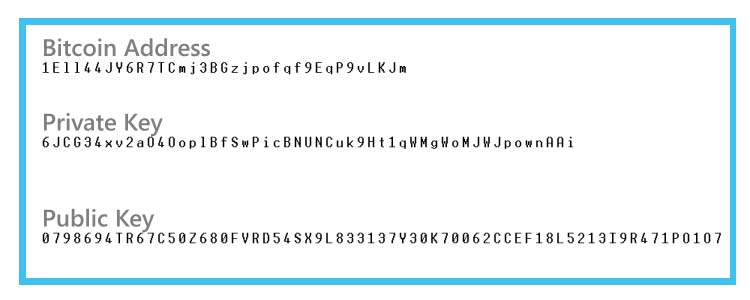
If you want to be a part of the crypto community, this on-chain resume is a way to demonstrate your crypto expertise and skills. Employers want to hire someone who is not only capable of doing the job but also familiar with the space. An on-chain resume can demonstrate a wide range of things, such as:
Your crypto wallets demonstrate your judgement, capabilities, and engagement. It’s similar to a dynamic resume that enhances depending on how well you use the world wide web. That’s what employers look for when interviewing potential employees.
The credential building is essential in any job, and the crypto space is no exception. This method of creating an on-chain activity resume will introduce you to a variety of web3 technologies while also providing you with a thorough understanding and appreciation of the industry.
Because an on-chain resume cannot be changed, your background will not lie, and this authenticity can be crucial for landing a crypto job. Just as you would rate your skills on a regular resume, what you do on the network demonstrates your level in the crypto space. This applies no matter whether you’re a beginner, intermediate, or advanced player.
So, how can you create an on-chain resume that will land you the job? Here are some amazing suggestions from Bankless:


These may appear to be a lot, but once you get used to them, you’ll be rolling in the crypto space with no one stopping you. Just keep in mind that you do not have to complete all three levels overnight. Take things at your own pace.
The most important thing is that you understand what you’re doing there. For your convenience, the activities described above are listed below:
| Level | Activities in the crypto space |
| Beginner | Set up an ENS nameOpen a Maker Vault Donate on GitcoinMint an NFT / collect an NFTProvide liquidity on Bancor Trade on UniswapTrade on Matcha |
| Intermediate | Open a Liquity Trove Earn yield with a Yearn Vault Provide liquidity on Uniswap V2 Use DeFi smart tools like Instadapp or DeFi Saver Save with mStable’s Save app Trade on Loopring’s L2 exchange Bridge assets to the Polygon sidechain |
| Advanced | Open a Rai SafeProvide liquidity for Uniswap V3Write a governance proposalCurate an NFT gallery Use a flash loan via Furucombo Use Yam Synths to speculate on Ethereum gas Stake SNX on Synthetix |
You can also complete multiple activities in a single session rather than having to switch between platforms. RabbitHole is one of the best for assisting in the development of on-chain resumes through “quests.”
Some people are concerned about the wallet’s (or should we say, on-chain resume’s) public visibility and inability to be altered. Fortunately, there’s a way to strike a balance between what makes a good on-chain resume and keeping your digital assets private.
It’s imperative to utilise a wallet that maintains the protection of your crypto portfolio while developing your on-chain resume. Private assets, on the other hand, should be kept in hardware wallets, smart wallets, or a combination of the two.
Since your on-chain resume will be available to the public, define your goals for your wallet. If you intend to enter the world of work crypto, ensure that your transactions are suitable for viewing by potential employers. Below is an example of an on-chain resume:

Here are some benefits and drawbacks of building an on-chain resume, primarily for those seeking employment in the crypto space.
Whether or not you should create an on-chain resume is largely determined by your perspective on the crypto world. It’s fine if you choose not to create one, if it’s not something you want to explore or participate in.
However, given the possibility that Web 3.0 may become the internet of tomorrow, NOW is the best time to start building your on-chain resume. Whether on Ethereum or any other preferred network, building a strong on-chain resume will open doors to both on-chain and off-chain opportunities in the near future.
As this major technological revolution is still in its early stages, more changes are on the way, and much more research is required. Standards, as well as a solid decentralised digital infrastructure, will need to be established. Policies must also be implemented where necessary. Although we’re all excited about the massive changes and online freedom that are about to take over the digital world, it’s best to be extremely vigilant of this unregulated industry for the time being.
Web 3.0, on the other hand, is widely regarded as the next big thing on the internet, and now is the ideal time to begin creating your portfolio and position yourself as one of the first. Obtaining an on-chain resume essentially entails you experimenting with the space. Thanks to a range of networks and endless possibilities, it’s never too late to build your own on-chain resume!
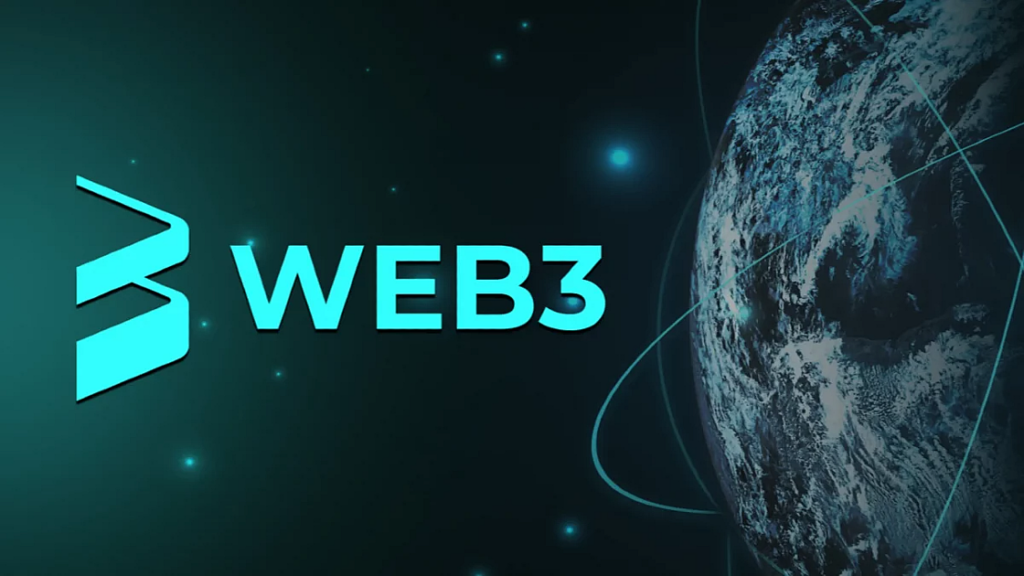
Heads up, folks: Web3 is not going to happen in 20 years, it’s already in process! Markets are evolving at a more rapid pace than before, which means that Web3 will be upon us sooner than you think. But for those of you who are still asking what this term means, let’s do a quick run-through, courtesy of information taken from our latest webinar, ‘Tech Talk With George Wong: Start A Career In Web3’.
In the first stages of the internet (also known as Web 1.0), communication was very much a one-way street. People could only use the ‘Search’ bar to get information, or send and receive emails, thus labelling it the “read only” era. Next up, was Web 2.0, where it evolved into the two-way communication that we all know today. It not only allowed us to search for information, but to interact with one another, and with content creators too. The thing about this version though, is that all our data (yes even the sensitive ones) are stored and controlled by mega corporations.
Enter the new evolution that many are now wondering about: Web 3.0! Compared to its predecessors, this version isn’t controlled by only a handful of people; it’s controlled by all the users (think of it like a democracy) simultaneously. As such, this version has two main advantages: No intermediaries, and decentralisation.
The former means that Web3 cuts out all forms of middlemen to allow for cheaper and faster options, allowing users to access anything and anywhere directly – slowly replacing all the companies which have traditionally relied on go-betweens. For example, if you remove Netflix, which provides paid digital streaming services, then you’d be able to freely watch movies and TV series to your heart’s content.
As for the latter, the aim is for the online ecosystem to be consolidated into a single platform based on blockchain technology, thus allowing for its users to have complete control over their own data – without the interference from mega corporations. It’ll be much easier for users to just plug into the network, provide any form of value, and then plug right back out.
George then went on to touch on the ‘metaverse’, which is defined as a “digital reality that combines aspects of social media, online gaming, augmented reality, virtual reality, and cryptocurrencies to allow users to interact virtually”, according to Investopedia.
He is of the opinion that the types of jobs now readily available and highly in demand in the market are rapidly evolving. For example, 20 years ago, the idea of playing online games for a living would never have been viable; however, we’re now able to see online gamers who have actual production teams dedicated to setting up livestreaming sessions for them, and they’re able to earn massive amounts of money. As such, the perception of society is now shifting towards these more unconventional careers.
He then went on to advise participants on how to get a job and establish their own value in Web3, “You don’t need to change what it is that you do or are good at; you just need to upskill and upgrade yourself to make the transition. Be open-minded and find ways to showcase your skills, especially if you know what Web3, metaverse, and cryptocurrency are.”
“For example, if you’re good at marketing, then the best thing you can do is to learn how to market effectively in that space, by getting involved in the communities as well as learning the lingo and keywords, which are very important and often overlooked!”
Some of the high-demand jobs in Web3 are: Developers, marketers (much-needed but requires those who are well-versed in the Web3 and metaverse spaces), as well as social media management (specific ones like Discord).
To all those reading this: The best time to enter Web3 is NOW, when everything is slowly growing and developing. This is because people are more open and willing to accept newcomers, as there’s a massive shortage of people well-versed inside, so you’d be able to have a relatively easy entry and make your mark. You can watch the entire webinar below:
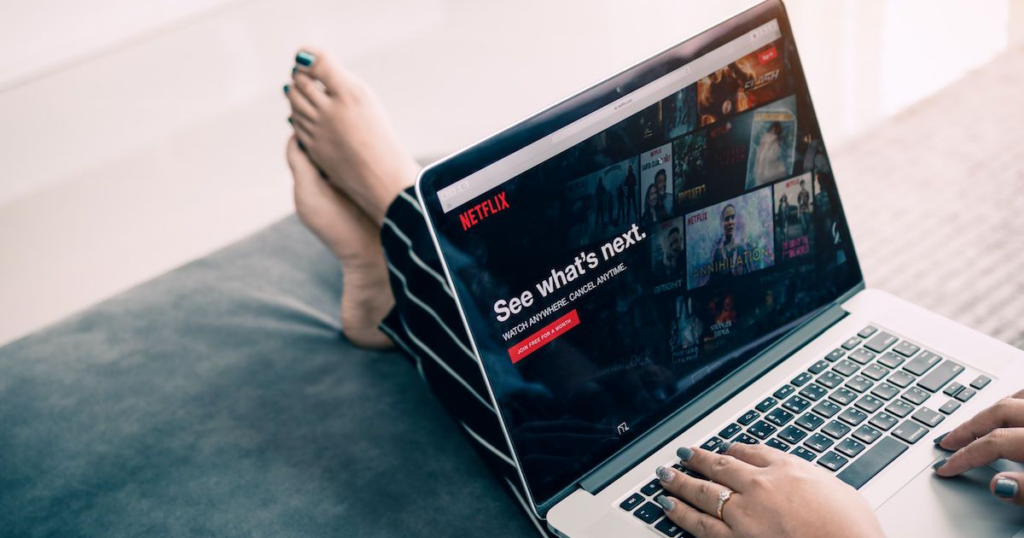
As an adult, time is everything to us. Our lives are segmented based on it: What time to wake up, how much time we have to ourselves before we begin work, what we do with our free time, etc.
It has become so precious to us that we become calculative with it. Ask yourself, what can you do with two hours? Probable answers: Commute to work, take a good nap, clean your home, cook dinner, or watch a movie?
Regardless of how you spend your time, everyone needs some form of escape from life. For some, it could be exercise, arts and crafts, hitting the latest restaurants, or just channelling your inner couch potato with Netflix.
Since each episode of a TV series is 30-60 minutes, it’s the perfect length of time to escape and lose yourself in the fictional TV world of McDreamys. Consider them bite-sized movies, split into many different parts so you never need to think about when’s the best time to run for a toilet break.
Catch an episode during your lunch break, on your commute to work, or right before bed. Be warned, though, some of these TV shows about life at work might be too good to watch just one episode per day!
*Disclaimer #1: The availability of these shows are subject to the platforms’ discretion.
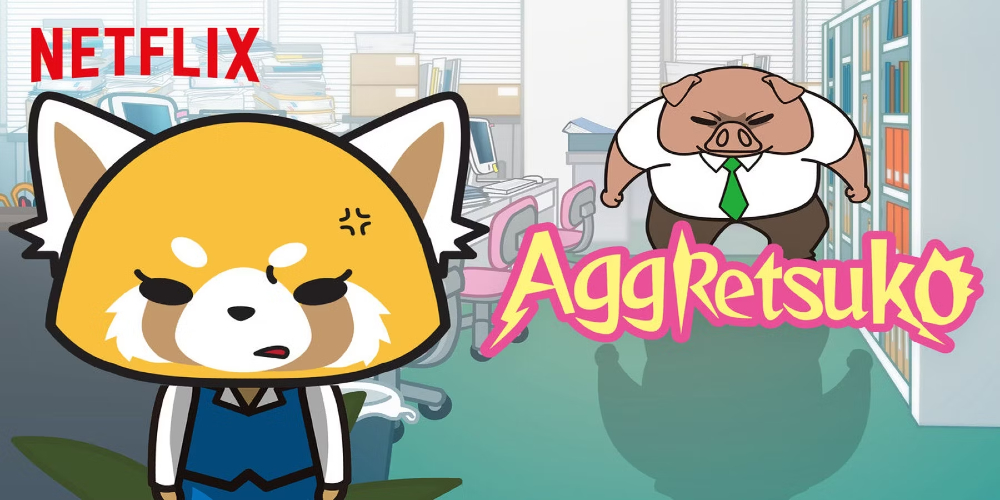
By day, Retsuko the Red Panda is a gentle, diligent office worker. By night, she unleashes work stress in the most therapeutic way possible: Singing death metal songs with a few drinks in hand. With a colourful cast of characters in tow, this Japanese anime tackles common workplace issues young adults face, like snobby colleagues and pushy bosses.
Where to watch it: Netflix

Atelier follows the life of Mayuko, a fabric geek working in a boutique lingerie design house, Emotion. When Mayuko’s colleagues leave for a more established competitor, Emotion faces bankruptcy, and Mayuko takes it into her hands to save the company while coming to terms with her own dreams. We’re getting distinct ‘Devil Wears Prada’ vibes here!
Where to watch it: Netflix

Taking place in Brooklyn’s 99th Precinct (hence, the apt show title), this long-running cop-comedy show is the one to tune in to when you need a mix of clever jokes, seriousness, workplace camaraderie, and motivation. As Gina once said, “Captain, turn your greatest weakness into your greatest strength. Like Paris Hilton.”
Where to watch it: Amazon Prime, Hulu, NBC, and Netflix

How do you turn millions into billions? In the financial world of Billions, leave it to Bobby Axelrod to make that happen – even if it means through acts of aggression and illegal tactics. As United States Attorney Chuck Rhoades strives to prosecute Axelrod, a game of cat-and-mouse ensues that will make you question who the real cat and mouse is.
Where to watch it: Amazon Prime, Hulu, Netflix, SHOWTIME, and YouTube
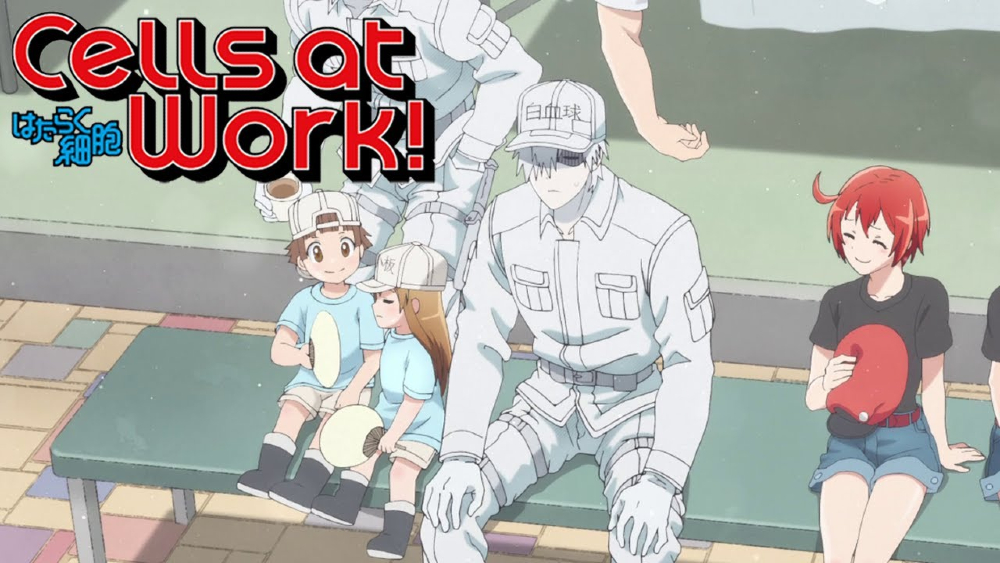
Like employees working together to keep a business up and running, the cells in your body do the very same! From curing wounds and defeating germs and bacteria to ensuring the safe passage of reproductive cells, this Japanese anime is a light-hearted take on how the human body works and what teamwork means.
Where to watch it: Amazon Prime, Crunchyroll, Netflix, and Viu

Behind the shiny manicures and pedicures lie the secrets of the underworld. Equal parts comedy, drama, and action, Desna and her posse of manicurists fall deeper into the world of organised crime and money laundering until they emerge at the top, but at a cost to themselves and their friendship.
Where to watch it: Amazon Prime and Hulu

Combine music and heir/heiress drama, and you have yourself a show to keep you entertained for days. Watch as the members of the Lyon family fight each other ruthlessly for control over the patriarch’s Empire Entertainment, proving that the blood of the covenant is thicker than the water of the womb.
Where to watch it: Amazon Prime and Hulu

Reworking preloved and vintage clothes into new fashionable wear, Girlboss is the story of Sophia’s entrepreneurship journey to the owner of her company, Nasty Gal. It captures the business decisions one must make – like placating angry customers, industry etiquette, and the line between friendship and business partners.
Where to watch it: Netflix

What would you do to protect your colleagues or bosses? Would you murder someone? In this TV series, murder is the overarching theme – coupled with the wit and cleverness of lawyers to outsmart the law, legally.
Where to watch it: Amazon Prime and Netflix

Revolving around the lives of the Kim family, this show will be relatable for anyone who has ever worked in a family business and tough-love Asian households. A mix of comedy and real-life, the dynamics of a family-run convenience store are endearing to watch as the characters grow beyond their comfort zone.
Where to watch it: Amazon Prime and Netflix

If you think your boss is God-like, wait till you get the chance to actually work for Him – like Craig and Eliza, angels in Heaven Inc. After years of civilisation, God has had enough and intends to destroy the world. To save humanity, the two angels make a deal with God to pull off the ultimate miracle: Help two humans fall in love with each other.
Where to watch it: Amazon Prime and YouTube

When Geu-Rae fails to become a professional ‘baduk’ (an abstract strategy board game) player, he becomes an intern at One International, despite only having graduated high school. Featuring eclectic colleagues, office politics, and million-dollar international business deals, Misaeng captures the highs and lows of the inner workings of a white-collar corporation.
Where to watch it: Amazon Prime, Netflix, and Viki

There are bound to be challenges when working with new or differently-abled colleagues. But with it are a set of learnings: Patience and understanding.
Born with Asperger’s, Geu-Ru and his estranged uncle are trauma cleaners, cleaning out the belongings of dead people and uncovering their life stories. While learning more about each other and their clients, this show will tug on some heartstrings no matter how stone-cold your heart is.
Where to watch it: Netflix

Comedy and satire find a home in Parks and Rec, where a town’s public officials take up new projects to make their city better. With a diverse cast, excellent camerawork, and well-delivered punchlines, this award-winning series provides some humorous respite from the everyday stresses of work and life.
Where to watch it: Amazon Prime, Hulu, Now TV, and YouTube

The theme song for this show should be Beyoncé’s Run The World (Girls) because it’s all about women in charge and leading the corporate world!
After being fired by Unicon, Ta-Mi joins rival company Barro and teams up with Cha-Hyeon to make Barro the new ‘in’ thing, surpassing Unicon. With women taking the reins in this Korean drama, it’s a breath of fresh air that many K-drama fans will be invigorated by.
Where to watch it: Netflix, Viki, and Viu
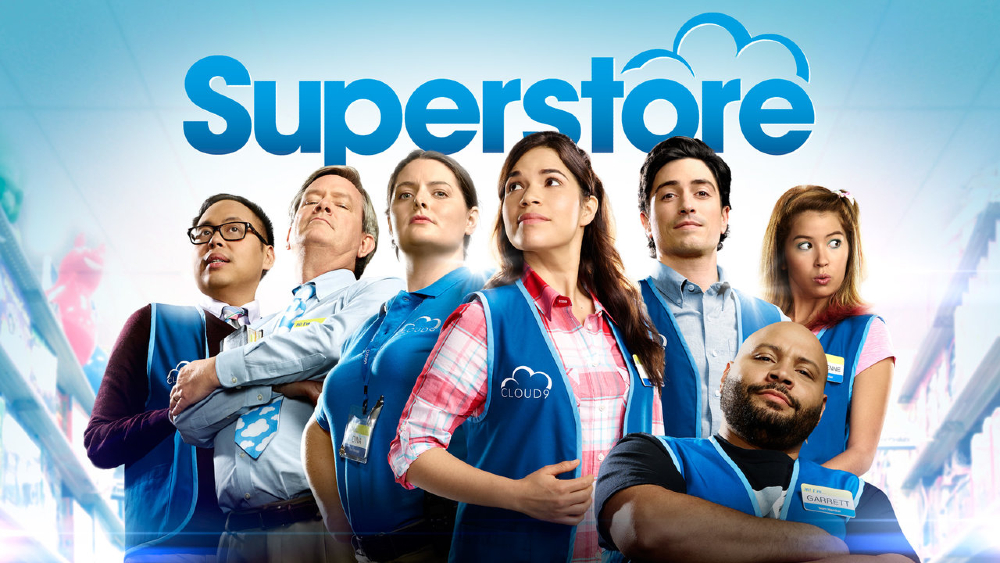
If there could be anything else super about Superstore, it would be the fact that it’s super relatable for anyone who’s ever worked in customer service or as floor staff. At the Cloud 9 chain store, employees make the best of their workday through teamwork, friendship, and plenty of hilarious moments together.
Where to watch it: Amazon Prime, Hulu, and NBC
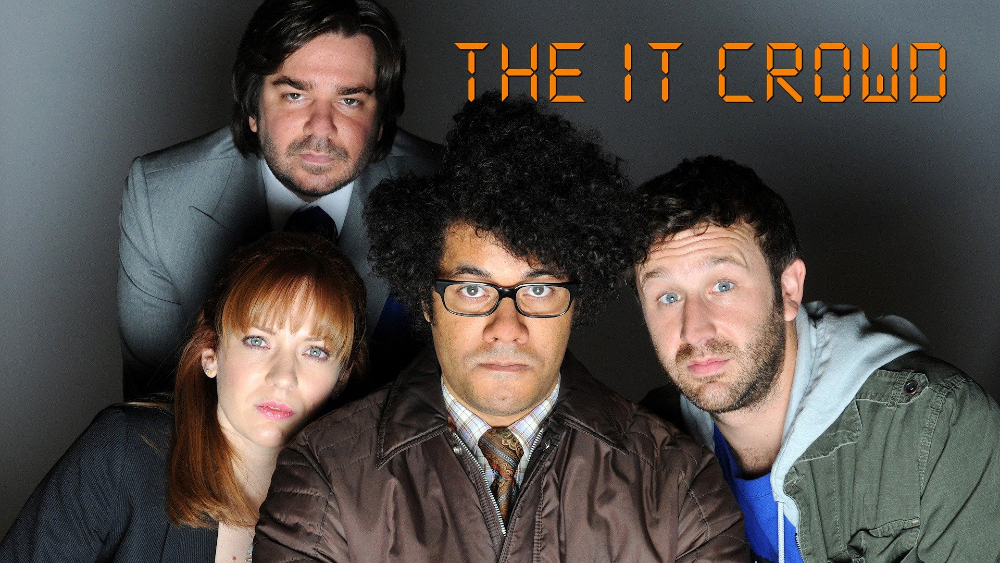
British humour may not be everyone’s cup of tea, but it doesn’t hurt to give The IT Crowd a try. In the basement office of Reynholm Industries, Moss, Roy, and Jen form the IT support team as they bumble through work, everyday tech problems, and their careers. Their personas cook up comedic drama anywhere they go, from friendships to work and romance.
Where to watch it: All 4, Amazon Prime, and Netflix

Ah, the good ol’ argument of who does it better – the United States or the United Kingdom. We’ll let you be the judge of that. The Office follows a similar format to that of Parks & Rec, with simple camerawork, comprehensive characters, and smart, humorous quips that will have you chuckling as you press play on each episode and the next.
Where to watch it: Amazon Prime, Hulu, and YouTube

Hired as a personal assistant to editor-in-chief Daniel, Betty and Daniel face internal rivalry from creative director Wilhelmina and her team who are eager to replace them. Beyond the workplace, Ugly Betty dives into each character’s struggles, showing the many hats a person can wear – employee, friend, lover, daughter, sister, and aunt.
Where to watch it: ABC, Amazon Prime, and Hulu

That includes the fire department, anything to do with law enforcement and criminal investigation, medical and healthcare workers, and even all the seasons and spin-offs of the classic TV shows – CSI: Crime Scene Investigation and Law & Order.
Here are some viewing recommendations:
| Fire & Rescue | Law Enforcement & Criminal Investigation | Medical & Healthcare |
| Chicago Fire, Rescue Me, Station 19, Trauma, 9-1-1 | Blue Bloods, Chicago P.D., Criminal Minds, Hawaii Five-0, Mindhunter, NCIS, Rookie Blue, The Alienist, The Rookie, The Shield | Grey’s Anatomy, House, New Amsterdam, The Good Doctor, Private Practice, Royal Pains |
Not everyone has the luxury to sit down and focus solely on their favourite show. In this case, multi-task with simple tasks that can be done leisurely. Let an episode play while you fold the clothes, have a meal, conquer the gym treadmill, or even while in the shower – just make sure you and your device are not in harm’s way.
Besides being entertained, pop culture such as TV shows, movies, and music can make good conversational topics with your workmates. It allows teams an opportunity to bond, learn more about each other, and nobody has ever said no to TV or movie recommendations.
*Disclaimer #2: We highly encourage our readers to watch these shows on websites that do not breach any media copyrights or legalities.
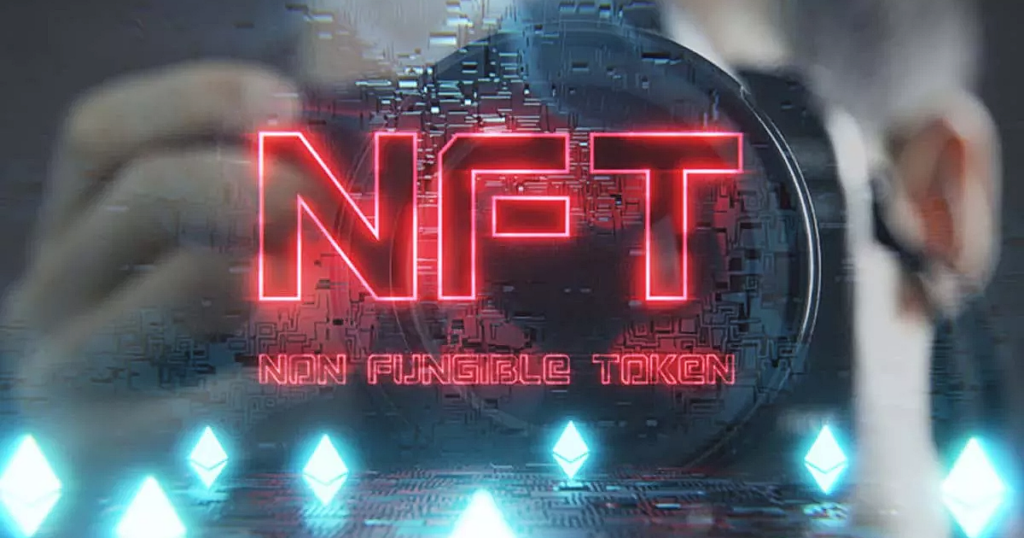
Before we can get into NFTs and how you can make a career out of it, we first have to understand the technology behind NFTs and the space they operate in: The crypto space. If it wasn’t already a dead giveaway, the crypto space makes use of cryptocurrency in order to function. But what exactly are ‘cryptocurrencies’? Fret not, we’ve got you covered.
Cryptocurrency (or more commonly referred to as ‘crypto’) is any form of digital currency which exists virtually and makes use of cryptography to process and validate transactions.
The function of cryptocurrencies are widely the same as regular fiat money, with the main distinguishing feature being a lack of a central issuer or regulating authority (such as a bank), rendering them theoretically immune to government interference or manipulation. Cryptocurrencies use a decentralised peer-to-peer system that can enable anyone anywhere to send and receive payments.
As mentioned above, cryptocurrencies do not exist physically in the real world like regular cash money, and are stored in digital wallets. All crypto payments exist solely as digital entries to a public online database, or ledger known as the ‘blockchain’.
Cryptocurrency received its name because it uses a type of encryption called ‘cryptography’ to verify transactions. In layman’s terms, advanced coding is involved in storing and transmitting cryptocurrency data between wallets and ledgers, with the sole aim of providing security and safety.
So what makes this form of currency so popular these days? Well, the answer to that is simple: Cryptocurrency transactions are cheaper and faster, that don’t collapse at a single point of failure. Since cryptocurrencies don’t use a third-party intermediary such as a bank, the regular processing fees and transaction times don’t apply.
The public ledger also effectively eliminates the possibility of a single point of failure, such as a large bank, setting off a cascade of crises around the world. Case in point is the one that was triggered in 2008 by the failure of financial institutions in the United States.
Now that we’ve briefly explained what cryptocurrencies are and how they work, let’s move on to the actual reason you clicked on this article: NFTs! If your head’s still spinning from the crypto explanation, we suggest you take a seat, strap yourself in, and brace for impact because we’re about to have a head-on crash course in NFTs.
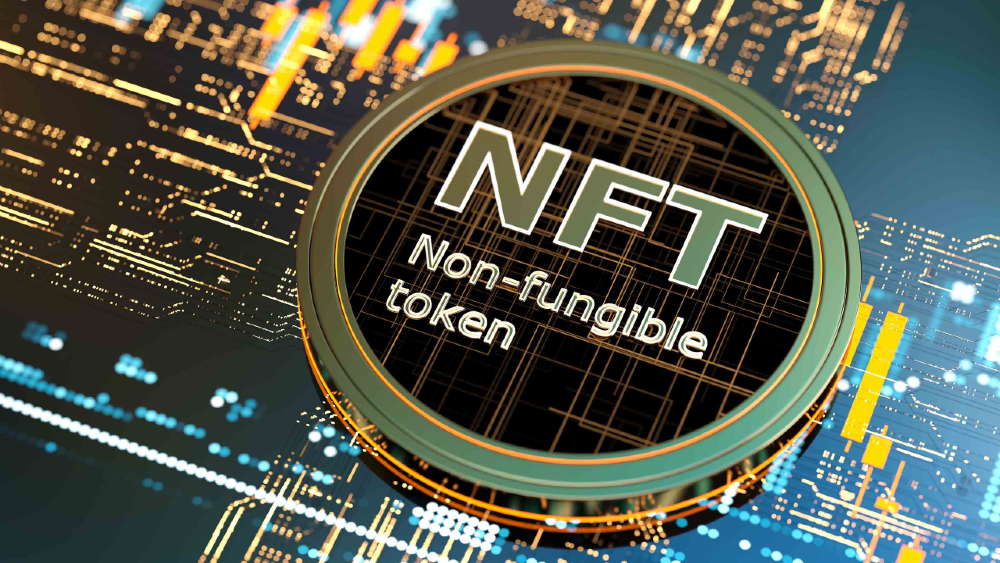
NFT stands for non-fungible token. Wait. Fungible? What does that even mean? Fungible is just a fancy way of saying an item cannot be replaced with another identical item. So, in other words, an NFT is a token that is unique and not interchangeable.
This kind of token is a bit like cryptocurrencies, with the difference being you can trade crypto and have more of the same thing, but each and every NFT is unique. Any non-fungible entity does not have any other identical equivalent with which you can exchange it.
Take the example of an album by a famous music artist. Even though there could be millions of copies of the album, they cannot be exchanged with the artist’s original recording. Which brings us to the topic of proving which one is original, to begin with. That’s where the blockchain technology we mentioned earlier comes into play. Much like cryptocurrencies, the issuing and trading of all NFTs are recorded and stored in a public ledger, so the original can always be traced and identified.
The ability to verify the authenticity and help prevent piracy is what makes NFTs so special. To put it simply, they act as digital copyrights on commodities. The notion that you can assign value to a non-tangible asset (be it digital art, a digital meme, or even a tweet) is what’s driving the value of NFTs. With the added piracy protection has meant that content creators such as artists, musicians, or even developers can now auction their products directly to the consumer without having to worry about their work being pirated and distributed illegally. NFTs are being touted as the future of digital transactions.
Now that you know what NFTs are, it’s time to find out how you could build a career for yourself in the space. We’ve put together 4 simple tips that will help point you in the right direction.
The NFT space is still relatively new, so it’s important for you to pay close attention to who some of the big players are in the space. Big players make big moves, and you could definitely benefit from following their lead.

Pay attention to the original pioneers in the space, and see how they got started. They definitely weren’t big players when they started, but they certainly did something right to get where they are now. Use that as your own blueprint for success.
The NFT space is constantly evolving, so if you’re not keeping up with the latest developments, you’re going to be left behind. Don’t just sit around and wait, research and monitor what others are doing, and see how the market adapts and responds to it.
At this current point in time, there are very few people who can be considered experts in the NFT space. It’d be beneficial for you to learn as much as you can, and establish yourself as an expert in the field. When everyone else wants to hop on the bandwagon a little way down the line, people and companies will be looking for people like YOU to guide them in the NFT space, and you can make a pretty penny as a consultant!
A great way to build your career in the NFT space is by acquiring skills that are in high demand. We’ve listed 6 must-have skillsets below for you to succeed in the NFT space.
Ethereum is the platform of choice when it comes to around 90% of NFTs, which means NFT companies need people who are fluent in the programming language behind Ethereum. Yup, you guessed it: Solidity!
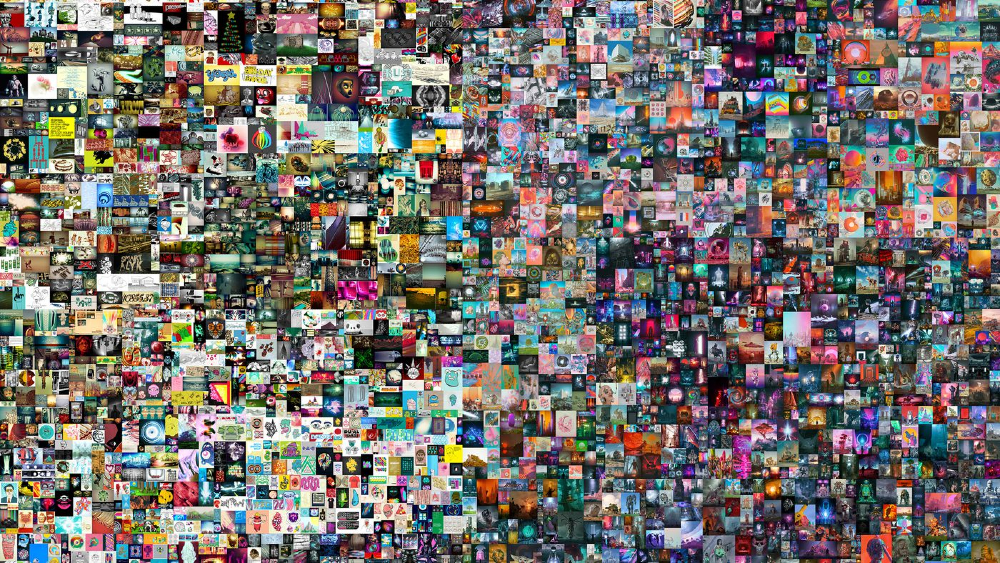
Most NFTs currently on sale are some form of art, and that requires an artist to design the various assets, before they are turned into NFTs. While most of what we see on sale are graphic art, that’s slowly changing with other innovative offerings such as sounds, music, and even generative art that is entirely programmed. Any art which can be digitised can be turned into an NFT and sold.
While most people see NFTs as just art, the communities built around it are stronger than the actual art itself. Some NFTs are valued at thousands of dollars just for the communities that go along with it. Skilled managers who are able to establish and grow a good community, knowing that it’s essential towards building the brand, are highly sought after by NFT companies.
Web 3.0 (also known as ‘Web3’) has its own unique set of challenges, and more UI/UX designers who are native to this space are needed to simplify the information, where it’s easily digestible and intuitive for the end-user. Blockchains are complicated and consumer-friendly applications are needed in order for the space to become more widely adopted.
Game development is quickly becoming a new avenue in the NFT industry, as projects are looking to become more than just art. Traditional game companies such as Ubisoft are also looking to get into the NFT space, so it won’t be long before other giants follow suit. When that happens, they’re going to be looking for NFT game developers who are able to build blockchain games that appeal to mainstream gamers.
As you probably already know, there’s a lot of hype in the NFT space, which makes marketing an integral component of any NFT project. Just like any other industry out there, good marketing helps your business (or in this case, project) get more people excited and willing to invest. Some NFT marketing responsibilities include organising Twitter Spaces, partnering with other NFT projects, managing White Lists, and building organic hype.
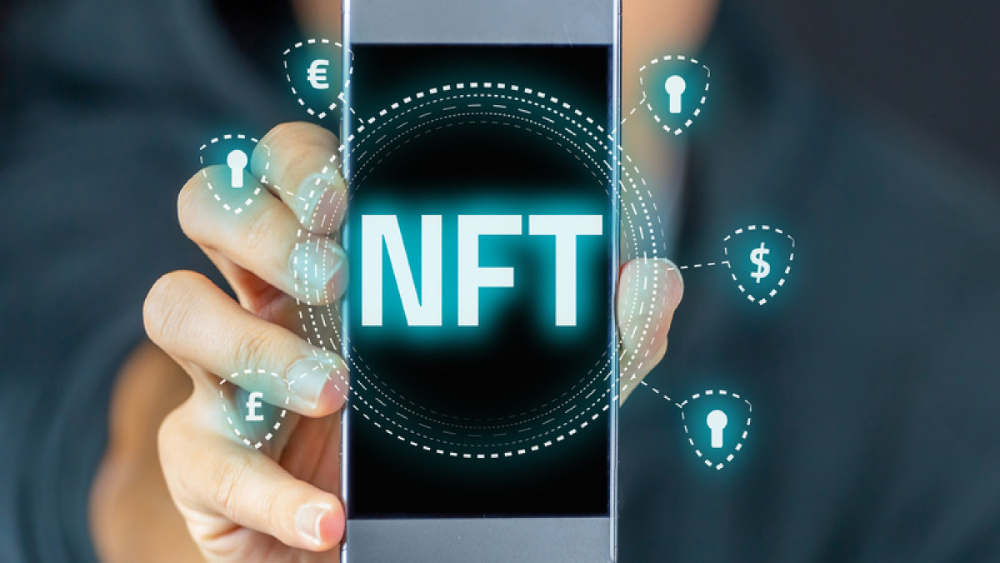
For the uninitiated, SODL and HODL aren’t intentional typos (although it did start out that way); they’re actually unique jargon from the cryptocurrency market! The former stands for sell, and the latter stands for hold, much like how you’d see in the stock markets.
The NFT market is still relatively new and would go through different stages of development until it finally stabilises and settles. The same can be said for your career development in the NFT space. While immediate success is highly unlikely, you need to keep going on to find suitable prospects for building both your career as well as fluency in NFTs. Knowledge and practice can set you apart from the competition when it comes to jobs in the NFT space.
With that being said, it’s also important to be careful when entering such a new and volatile space. Much like in every field, you need to be well informed and cautious so you can avoid becoming a victim of a crypto or NFT scam. Always do your research, and make sure to always store your cryptocurrency in a secure crypto wallet.
Finally, it’s important to understand that the crypto and NFT spaces are still in their early stages, so there’ll be volatility and you should be prepared to endure some ups and downs.

Ever wondered how you could easily swipe left or right on Tinder to like or pass on someone? And have you seen how professional and clean Airbnb’s app looks? These are all the works of UX and UI designers; they’re essential for anyone looking to establish their place in the digital world.
From apps to websites, these two designs go hand-in-hand to give you a superior product that everyone enjoys using. Read on, as we’ll be diving into the world of UX and UI and showing you some important designer titles you should learn about.
We’ll kick things off with UI; this stands for user interface, and is basically how users react with a particular device, app, or even website.
So, when designing a user interface, you wouldn’t only want to create something pretty, but something easy to use as well.
UI design refers to graphical user interfaces and other forms of interface design.
Think about the ‘pause’ and ‘play’ buttons on YouTube. That’s one example of a user interface design. The button to click ‘send’ for your email is another example. A good UI is one that allows users to perform their intended tasks with ease and simplicity, yet is still pleasing to the eye.

“UX” stands for user experience, and it basically explains itself – it’s the experience the user has when interacting with a device, app or website.
According to the Nielsen Norman Group, ‘user experience’ includes all aspects of the interaction between the end-user and its products, the company behind it, and other aftermarket services provided. ISO 9241-210, defines user experience as “a person’s perceptions and responses that result from the use or anticipated use of a product, system or service.”
This would cover a person’s perceptions and responses resulting from the use of the product. UX designers are in charge of determining how the user interface operates.
So, while designing a UI, it is always prudent to keep UX in mind as well. If it works well and feels seamless, the user will enjoy the experience, which is what counts.
Imagine pressing your snap button on your camera but instead of taking a picture, it starts recording a video. This means that the interface was designed poorly in terms of functionality.
From the explanations above, it’s easy to get the two mixed together. You would think that if it’s designed beautifully or neatly it would function the same way, right? Actually, it’s a little more complicated than that.
| UX | UI |
| UX designs use tools to create wire maps and frameworks. Software like Figma and InVision will be used. | UI designs are mostly visual and graphic, so expect Sketch, Adobe and Origami Studio to be among the ‘must-use ‘tools. |
| UX designers require a lot of user research input to determine the best flow for the product. | UI designs must be visually pleasing, enticing and give users a ‘feel good’ experience. |
| UX requires logic to create functioning products. | UI requires creativity to create amazing looking products. |
| The end product of a UX design is for programmers to implement. Coding is required here. | The end product for UI is for the customer/client. Usually for the front end. |
Based on the table above, it’s clear that a UI designer focuses more on the visual aspect of the interface, as opposed to the UX design. One is to look good, whilst the other allows you to use it with ease.
As Don Norman and Jacob Nielson so succinctly put it, “It’s important to distinguish the total user experience from the user interface, even though the UI is obviously an extremely important part of the design. As an example, consider a website with movie reviews. Even if the UI for finding a film is perfect, the UX will be poor for a user who wants information about a small independent release if the underlying database only contains movies from the major studios.”
In the grand scheme of things, you need mastery in both fields to actually develop an eye-catching app, programme, or system. We’ve listed some of the most popular UX and UI job titles below for you to read and learn about. Who knows, there might be something worth pursuing yourself!

The UX process has many stages, but a UX designer is not expected to be a specialist in any one function. In other words, UX designers are expected to embody the principles behind the saying, “a jack of all trades, a master of none.”
UX designer duties include:
The UX Architect develops the structure and flow of a digital product (website, app, software, etc) so that users will enjoy using them. They conduct research and interviews, take that information and transmutes it into wireframes and sitemaps which will then be used to guide the final design of the product.
UX writers create the written content to be used in the app, programme or software. They create any worded content for users to read and interact at the end-stage. A good example would be the ‘X’ button on your internet tab. Press it and the tab closes. In addition to that, the UX writer creates content meant for the product, be it informational, humour, or hubris.

The UI Designer takes the groundwork done by the UX designer and implements it into the design of the product. If it’s a webpage, the UI designer creates the image of the page whilst incorporating the functions done by the UX designer.
Things like the colour scheme and even the amount of information to be placed in a specific part of the software or app usually fall under the responsibilities of the UI designer. Most major companies already have a brand identity, colour scheme, and style that the UI designer would have to abide by when making a product for said company.
Essentially, UI designers are graphic designers. They prioritise the look and aesthetics of the product above all else. It’s their duty to make the interface eye-catching, stimulating and inviting to the user.
They also have to make sure symmetry and unity of the design be present from start to end of the product. Combined with the work of the UX designer, and you’ll get a beautiful product that’s seamless to use as well.
A good example of such a product is Pinterest. Being one of the card-styled design pioneers, Pinterest enhanced its product with the ‘waterfall effect’ to give users that silky smooth experience. Pinterest further enhances the perception of ‘click ability’ by giving each card a shade whenever the user hovers over it with the mouse. Smart visual effect!
UI engineers work the coding part of the designs intended to be used in the product. This is usually for front end website developers. Anything in software requires code; the UI engineers handle that part. They maintain the site, clear up any bugs and upgrade the site whenever necessary or as dictated by the company. They also make sure the front end is, from a user standpoint, visually pleasing and well-functioning.
As we’ve mentioned earlier, if you want to make a good digital solution, you need a good mix of UI and UX to attract and keep users to your product. There are some interchangeable skills for the roles we mentioned above, but it’s clear to note from the differences table, there are some specific software, techniques, and skills required for each respective field.
Mastering a field in either type is a great career prospect in 2022, as a lot of digital solutions providers are looking for individuals to enhance their product(s), making these titles we mentioned above highly in demand.
Ideally, you want to have a base skillset in one field and have some in-depth knowledge in the other. This will allow you to be able to undertake full projects or give you an idea of what needs to be done for any future products you want to conceptualise.
Now, if you’re starting to feel like it’s time to dip your toes into this field, check out this UI/UX designer’s resume first. This template may also help you produce a fantastic CV for your next job application.

Employees leaving their jobs is not uncommon in the world of work. In fact, the United States is currently undergoing Great Resignation which shows no sign of slowing down. Just in February, the U.S saw 4.4 million Americans quitting their jobs with an average of more than 3.98 million workers quitting each month since last year. That’s more than the whole population of Wales!
Nonetheless, resignation should not come as a surprise. You’ve seen colleagues leave their jobs at any company you’ve worked for, or perhaps you yourself have resigned from certain jobs. According to the Pew Research Center, the top three reasons why U.S. workers left a job in 2021 were low pay, no advancement opportunities, and feeling disrespected at work. What were your reasons?
While Profile Resourcing, a UK-based recruitment company said the top 10 reasons employees leave their jobs are:
Although it’s completely normal for companies to have employees leave them for a variety of reasons each year, what happens if the situation becomes out of control? For example, when a large number of employees leave at the same time, as is the case in the United States, it’s nearly impossible to fill all of the vacancies.
A high rate of employees leaving may also cost the company could cost the company in terms of decreased productivity, lost sales, and increased recruitment costs. On the other hand, some businesses may decide not to hire new workers to reduce their workforce and expenses. This brings us to one of the most contentious issues in the workplace: Company attrition.
If we look at the meaning of ‘attrition’ on The Britannica Dictionary, it’s defined as “a reduction in the number of employees or participants that occurs when people leave because they resign, retire, etc., and are not replaced.”

This term is frequently confused with turnover, which refers to “the rate at which employees leave a company and are replaced by new employees.” While both of these terms relate to employees leaving a company, they’re not the same.
The key to determining whether employees leaving is due to attrition or turnover can be based to the company’s decision afterwards. If the company decides not to fill the position, this is considered attrition. When a company decides to replace employees who have left, this is referred to as turnover.
It’s crucial for companies to understand the distinctions between attrition and turnover to keep their business finance intact. Particularly when it can be costly to replace certain designations.
Knowing the different types of attrition can help businesses understand why they’re losing employees, the implications for the company, and the steps that need to be taken. Employee attrition can occur as a result of:
| Attrition Type | Meaning |
| Attrition due to retirement | When an employee retires |
| Voluntary attrition | When an employee decides to resign |
| Involuntary attrition | When an employee is dismissed (i.e., fired) |
| Internal attrition | When an employee moves within the company |
| Demographic-specific attrition | When a certain group (age, gender, or ethnicity) quit |
Attrition allows companies to gain insight into why employees leave and develop retention strategies based on real obtained data, namely the attrition rate. This rate, also known as ‘churn rate’, calculates the number of employees who leave a company in a given period, typically in percentage form (%).

A thorough understanding of the attrition rate is vital for companies as it assists them in identifying any issues that need to be addressed within the workplace. If attrition is high, it may indicate that companies are not providing adequate benefits, or the best work environment to retain top-performing employees.
At the same time, companies can also use attrition to their advantage. It could be an opportunity for them to reduce labour costs by implementing a hiring freeze in which no new employees are hired to replace those who retire or resign. Companies will be able to save money if they need to.
The calculation is fairly simple. The rate’s duration is determined by whether companies want to measure attrition on an annual, quarterly, monthly, or daily basis.
The following is the step-by-step for calculating a company’s attrition rate (%):
The formula looks like this:

For a calculation example, let’s take a look at the two scenarios below.
Scenario 1
Step 1: 500
Step 2: 500 – 50 = 450
Step 3: 450 + 30 = 480
Step 4: (500 + 480) ÷ 2 = 490 – The average number of employees for Q4
Step 5: (50 ÷ 490) = 0.102
Step 6: 0.102 x 100 = 10.2%
The attrition rate for Q4 is 10.2%
Scenario 2
Step 1: 1,350
Step 2: 1,350 – 235 = 1,115
Step 3: 1,115 + 310 = 1,425
Step 4: (1,350 + 1,425) ÷ 2 = 1,387.5 – The average number of employees for H2
Step 5: (235 ÷ 1,387.5) = 0.169
Step 6: 0.169 x 100 = 16.9%
The attrition rate for H2 is 16.9%
NOTE: There’s no defining what is a “good” attrition rate. Although companies should aim for an attrition rate of 10% or less in general, what constitutes a good or bad rate depends on the nature of the business and industry.

Most people believe that attrition is a bad thing for a company because it’s associated with employees leaving their jobs. The truth is that attrition can be beneficial or detrimental. Companies will need to examine not only the actual attrition rate, but also the factors that contribute to it. Only then can businesses determine whether there’s a positive or negative impact on their operations; it could very well be both!
The main advantage has always been cost savings. This is especially true for companies that have employees who’ve been with the company the longest, and are already at the top of the pay scale. When such senior employees leave, the company can choose not to fill the position, resulting in salary budget savings.
The company may also decide to hire after employees leave to bring in new talent who can contribute new ideas to the company. If the employees who left were stagnant in their growth and no longer productive, hiring new workers could mean bringing in fresh people who are more eager to work.
Similar to losing employees who no longer contribute to the company, the attrition process could be used by a company to get rid of negative people. They could be the ones who are constantly committing disciplinary violations or simply can’t fit into the organisation’s culture.
Some of the most common ways that attrition can be detrimental to a company include losing key employees, increasing costs to hire and train new employees, and squandering investment in internal and external training. All of these factors can have serious financial consequences for a company.
Furthermore, businesses may be losing an old employee who knows the company inside and out. When new people arrive, it’s likely that things won’t be the same, which could have an impact on specific tasks or ongoing projects. This is also true when companies are confronted with the situation of employees quitting on short notice or going MIA.
Companies should also be aware of their brand image, as a high attrition rate can lead to a negative perception among the general public, existing staff, and potential employees. This is risky because it has the potential to negatively impact and reduce business sales and service.
| Pros | Cons |
| 1) Cost savings 2) Improving talent pool 3) Enhanced performance 4) Minimising negative influence 5) Remove poor job and culture fit | 1) Increased business costs 2) Reduced productivity or performance 3) Losing valued employees 4) Sudden resignations or MIAs 5) Facing a negative perception |

Employee turnover, or the number of people who have left the company, accounts for the company’s attrition. Remember the attrition rate formula described earlier? If you recall, the formula requires the number of people who left during the specified time period (i.e., employee turnover).
Essentially, companies will be able to determine their attrition rate by knowing what their employee turnover is.
When it comes to dealing with and managing employees, businesses face numerous challenges and must consider many factors, like in the case of dealing with employees who are leaving their jobs. The majority of companies would prefer to retain their employees so they don’t have to spend money on hiring and training new ones.
That’s why most employers would strive for a low attrition rate. By obtaining that low rate, they demonstrate that they’re able to retain employees who are satisfied with their job and environment and will not leave the company. Here are 5 easy ways to improve and lower attrition rates:

The Internet is not what it used to be in the 1990s and early 2000s. If you had the opportunity to use the service back then, you probably remember the sound of the dial-up connection attempting to link to the internet. Classic, right?
Going on search engines such as Yahoo and MSN at the time would not yield as much information as it does today. Mind you, people can now look up how to write that perfect thank you email after an interview!
Web technology has certainly evolved in so many ways. There’s always something new to discover on the internet, and a plethora of mobile applications have also been developed (with more being created every day). You could say that technology has made our life much easier and more convenient.
Let’s take a look at some web history to see where it all began:
This was the earliest version of the Internet, which was regarded as “read-only” and lasted from 1989 to 2005. It has little to no interaction, where users were passive and what most people were doing at the beginning was exchanging and forwarding emails.
However, it was also the beginning of digitalised communication. Remember those chat rooms you used to visit on MSN, Yahoo, and even mIRC? (surely you recall “a/s/l”) That’s what it’s all about. It was the “read/write” function that allowed users to chat and interact with one another.
Then came this version, where user-generated content was all the rage, and we’re still using it today! The Internet and the World Wide Web evolved into more than just a source of information, allowing users to interact with content creators, and with one another. The evolution brought social media platforms, video sharing sites, blogs, podcasts, and the list goes on.
When Web2.0 features were introduced, this technology saw an increase in content from 250,000 sites in 1996 to a whopping 80 million sites. Hence, any internet user today has the potential to become a content creator. This is also supported by the invention of the “cloud”, which stores the collective intelligence of published and user-generated content. Users can create their content for the rest of the world to access without needing to know much about publishing or web design.
Almost any type of information resource and service can now be found on the Internet. The question now is, “Where do we go from here?” The Web has already been upgraded numerous times to keep up with the fast-paced world. Banking activities, social interactions, and even grocery shopping are now all at our fingertips.
We are, believe it or not, in the process of transitioning to Web3, a new level of internet access and connectivity that’s expected to be more intelligent and efficient. With all the hype surrounding this upcoming web technology, you don’t want to miss out on learning how it will benefit you, and seeing some examples of Web3 in action.
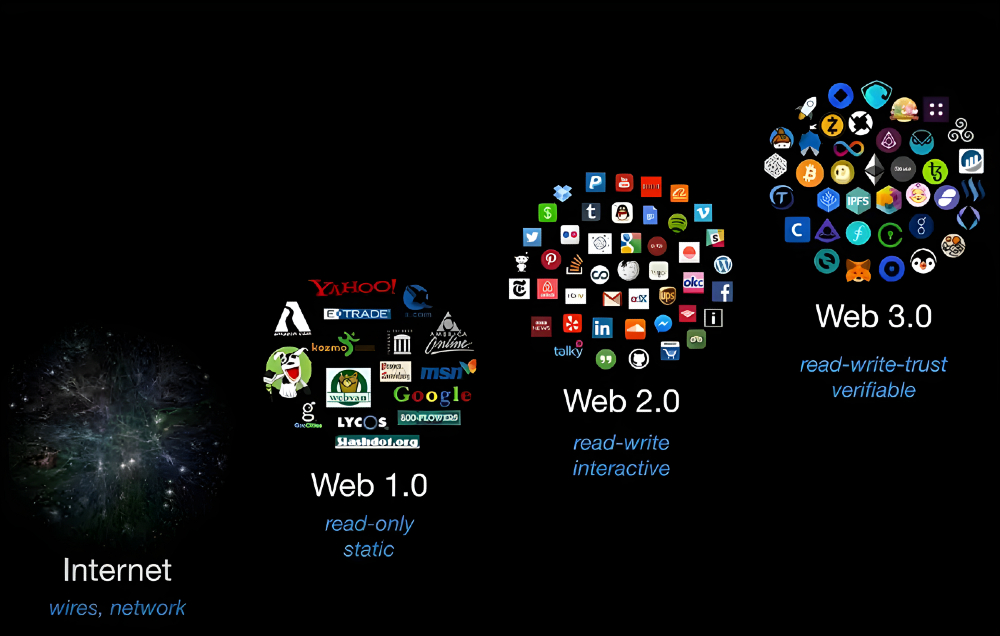
First off, we’ll start with: “What is Web3?”
According to Investopedia, “Web3 represents the next iteration or phase of the evolution of the web/Internet, and potentially could be as disruptive and represent as big a paradigm shift as Web 2.0 did. Web3 is built upon the core concepts of decentralisation, openness, and greater user utility.”
What this practically means is that Web 3 is a technological upgrade that intends to shift away from the centralised Web 2.0. Why? Because the majority of online activities are currently taking place on closed platforms (where users’ data are being stored) that are owned by corporations such as Google, Facebook, Youtube, Amazon, and many others, in addition to being controlled by governmental regulations.
Web 3 is emerging to address the unfair dominance and lack of personal privacy. The new Internet aims to decentralise the online ecosystem into a single platform based on blockchain technology, giving users control over their data without being attached to corporations. No wonder it seems like the transition towards Web 3.0 crosses technological precedence!
When interviewed by Wired, Gavin Wood (the man who coined the term Web3.0 in 2014, pictured below) stated that the fundamental issue as societies become larger and less defined is that there’s “now a weird kind of brand reputation thing” that expands globally. He went on to say that Internet users form powerful, albeit regulated, organisations.
Regulations for a wide range of industries, particularly those that are relatively new, are evolving much more slowly in Web 2.0, as regulatory bodies’ work has yet to catch up with the advancement of the various industries. Hence, according to Wood, the centralised model of Web 2 is a broken one.
In terms of how the Web 3 world might look, he explained that “the initial breed of Web 3 applications will probably be mostly small iterations on Web 2.0 applications. But one thing that Web 3 brings that Web 2.0 cannot easily service is financial obligations or economically strong applications.”
With Web 3, industries take on the role of regulators. Wood defined Web 3 as “less trust, more truth“, implying that rather than simply trusting that one company will not be able to decrypt users’ private messages, it’s preferable to know for certain that they’ll not be able to do so. As a result of this need for openness and transparency, the concept of decentralising the Internet and its services arose.

Let’s compare the operations of centralised and decentralised networks. Currently, we’re still in the Web2 era, which refers to the Internet that we are all familiar with: One that provides services in exchange for your data (be it location, demographic, or bank details).
On the other hand, the invention of Web3, which uses blockchain technology (among other types of technologies), allows users to participate without having their data monetised for use by regulators or providers.
In terms of censorship, there are major differences. Take, for example, Twitter. Currently, Twitter as a corporation has the authority to censor any account or tweet; however, with a Web3 app, tweets are subject to less to no censorship because the control to do so is decentralised.
Furthermore, payments for certain types of work on Web2 may fail due to a lack of personal data or other issues, whereas in a Web3 payment application, no personal data is required, and no type of payment is preventable. It certainly makes Web3 sound more like a world web of freedom.
Nevertheless, there are advantages and limitations to both forms of digitalised networks. The table below summarises the points elaborated, as well as other notable comparisons between centralised and decentralised technologies:
| Centralised | Decentralised |
| Users’ data becomes trading material in the presence of a central regulator. | Users can keep personal information safe when using the Internet and its services. |
| Censorship is regulated by a central authority – restricting parts of the network from interacting with one another. | Information gets sent out across the network as censorship is reduced (perhaps none at all). |
| Higher performance with less computational resources, resulting in easier implementation. | Lower performance due to expanded computational resources, making implementation more complex. |
| Conflicting data is referred to as the central authority for ‘truth’. | Resolving conflicts about the state of data would require a usually complex protocol. |
| Single point of failure as it can simply be brought down by an attack on the central authority. | No single point of failure considering the network is still operational even when the majority of stakeholders are attacked. |
| Participation in the network is controlled by a central authority. | Anyone and everyone can participate as there are no “gatekeepers”. |
When it comes to technology, there’ll always be benefits and drawbacks to using it. The same goes for Web 1 and Web2. That’s why we constantly see upgrades and advancements to create a better version of the previous one. It will come as no surprise if, ten years from now, we are already comparing Web4 and Web5!
One of the most appealing aspects of Web3 is that it enables users to generate income, collect assets, and claim ownership of the content created on the web, whether digitalised or simply added to the Web. This has been the more recent applications of Web3 with non-fungible tokens (NFTs) and the metaverse – all of which are virtual products. Because the coin/token is digitalised, we can easily refer to it as Web3 crypto.
On the downside, according to Ethereum – one of Web3’s pioneering developers – limitations include slower transactions because they require miners to process, in addition to being transmitted across the network. Issues may also arise in the implementation of Web 3.0 as cybercrime grows and evolves, necessitating enhanced cyber security.
More information about Web3’s benefits and limitations can be found in the table below:
| Advantages | Limitations |
| Users can generate income through their digital, virtual content. The transaction is carried out online with non-fungible tokens (NFTs). | A mash-up of technologies such as blockchain, machine learning, and AI – requiring upgrades to device specifications and existing sites. |
| Anyone and everyone can participate. No permission is required to use services as there’ll be no party to impede access. | Regulations affect access to public and private data, as well as the possibility of increased cybercrime. |
| Better transparency in data access and transactions. No middleman or intermediaries gaining profit from data or transactions. | Adopting implementation necessitates additional steps and software, so education and training are required. |
| More efficient and personalised web experiences – with semantic web and customisations. | Not yet integrated into modern browsers, therefore public access is currently limited. |
| Applications and websites would analyse users’ internet usage and offer customisations based on preference, device used, and location (among other factorisations). | Existing sites and applications will need to be aggressively upgraded to retain their market and clients if Web3 is to be fully implemented. |
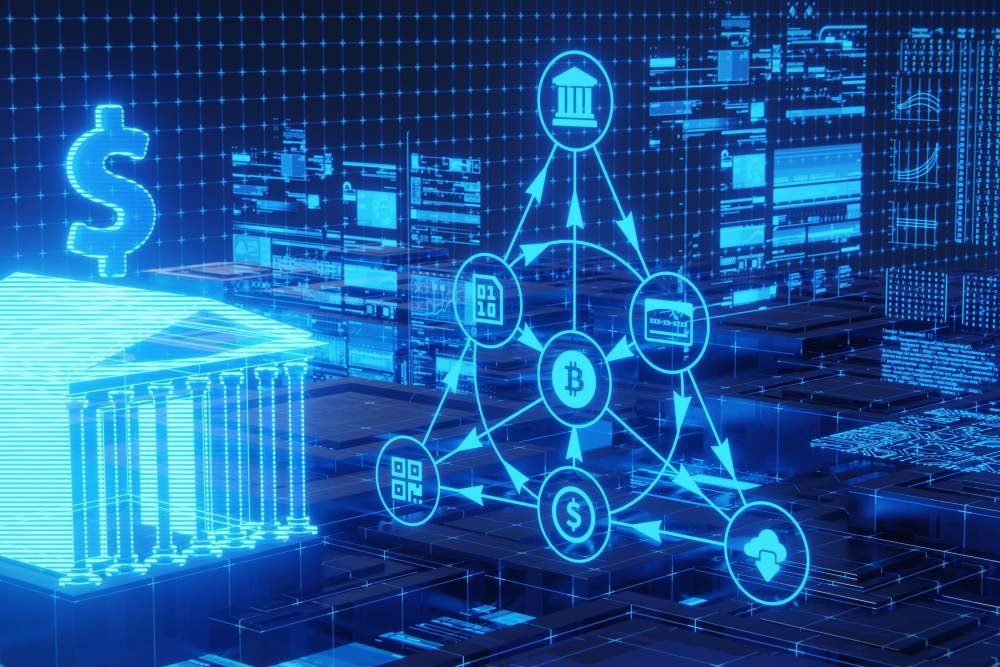
Surprisingly, Web3 is already in action, and it’s gaining momentum too. Some of the sites and decentralised apps (dApps) are:
Essentially, the decentralisation efforts of the Web that this next version offers are still ongoing, and here’s what to expect if you use Web 3.0:
To summarise, the goal of Web3 implementation is to give users control over their data via a decentralised Web system. Along with that, many more Web3 processes, such as blockchains and cryptocurrencies, will emerge.
Living in a world where things are happening and operating digitally could very well be the way forward for us as Internet users. The day will come when everyone will be able to live, learn, work, and participate in the digital world. If you aren’t, you’re missing out!

For busy employees and managers with barely enough time in the day for a decent meal, the last thing they’d want to do is slow down and take a breather. When deadlines are at the top of your priority, and back-to-back meetings are your life, ain’t nobody got time to be mindful.
But by not being mindful, you could be self-sabotaging yourself instead!
Rooted in Buddhism, the definition of mindfulness is best interpreted as a meditation practice where a person focuses solely on what they’re feeling in the moment. No judgement, no explication – just sensing everything around you, there and then.
From the warmth of your fingertips and the feel of your breath, to the hum of the air purifier and birds twittering outside: The practice of mindfulness involves simple breathing techniques, guided imagery, and other methods to help your body relax and destress.
Hustling to get the job done is applaudable, but can cause mental health issues such as anxiety, stress, and depression to surface. In Great Britain, 50% of work-related ill health cases in 2020/2021 were attributed to depression or anxiety.
At the core of mindfulness are two components to provide mental health relief: 1) Awareness of your emotions and, 2) An open, accepting attitude that lets you accept what arises instead of pushing it down and away.
For starters, it can enhance your overall well-being, performance, attention, sleep, and decrease burnout, depression, anxiety, and stress, among others. A 2014 workplace study found that employees who joined an online mindfulness program were less stressed, more resilient, and more energetic than employees who didn’t take the class.

It can also transform you into a better employee, team lead, manager, company director, and overall person. By being mindful, we can suspend judgement and approach experiences with kindness and empathy – both to ourselves and others.
Like other practices, mindfulness can be built and strengthened. Rome wasn’t built in a day, and likewise, the benefits of being mindful only start becoming measurable after 100 minutes of practice. There are no shortcuts: Just patience, acceptance, and simple mindfulness exercises you can do whenever you’re feeling tense.
1) Sit in silence
Bookmark this easy practice as a quick, 1-minute mindfulness meditation that can be done anywhere as long as you’re seated.
2) Stretch
More than just being tuned into your thoughts and emotions, mindfulness is about being aware of your body too. The best time to stretch is right after you wake up, but it can be done anytime during the day to wake your muscles up.
3) It’s okay to S.T.O.P.
When you’re under stress, know that it’s okay to stop. And by STOP, we mean:

4) Slower speed, maximum efficiency
Busy bees may not be eager to spend time being mindful because that means wasted time and efficiency. Wrong. By slowing your pace or completely taking a pause, levels of efficiency, productivity, happiness, and even resilience at work can increase.
Perceive mindfulness as quality rest or sleep. Without it, your efficiency dips down below and could lead to hasty, impractical decisions. Highly functional employees, leaders, and entrepreneurs slow down to reflect and produce better solutions. That’s mindfully working.
5) Feel gratitude
“Make one mistake and everyone will remember it. Make countless good deeds and no one will.” This is our ingrained ‘negativity bias’ speaking. Unfortunately, that means we adopt a constantly negative, unbalanced school of thought.
The cure? Gratitude. Practising gratitude daily can impact your health, relationships, creativity, output, etc. postively. In other words, sometimes it’s about looking at the glass as half-full instead of half-empty; reframing our outlook to positivity.
6) Take and savour your lunch
Ready for the most revolutionary lunch idea ever? Here it is: On your lunch break, eat your lunch.
It’s one hour mandatorily allotted (in most countries) for you to take a break and feed yourself. Don’t fiddle with your phone or think about work. Just eat and savour your food. When you respect your lunch hour, others will too, so set an example for a healthy work environment!
By integrating mindfulness as part of your daily routine, you’ll be able to stay grounded and manage your emotions better. It doesn’t need to take up a huge amount of time either – just a few minutes will do.
The key to mindfulness, however, is continuity and consistency. Dedicate a few minutes in the morning to mindful practices, or channel it between tasks at work to get your focus back on track.

1) Smiling Mind
Cost: Free.
Apple App Store: Download here
Google Play Store: Download here
2) Calm
Cost: 7-day free trial. Subscriptions begin at $14.99/month, $69.99/year, or a lifetime membership of $399.99. Teams of five or more get a 15% discount.
Apple App Store: Download here
Google Play Store: Download here
3) Headspace
Cost: Free trial. Subscriptions begin at $12.99/month or $69.99/year.
Apple App Store: Download here
Google Play Store: Download here
4) The Mindfulness App
Cost: Free trial. Premium subscriptions begin at $9.99/month or $59.99/year.
Apple App Store: Download here
Google Play Store: Download here
5) Breethe
Cost: Free. Premium membership begins at $12.99/month, $89.99/year, or a lifetime membership of $179.99.
Apple App Store: Download here
Google Play Store: Download here
If you need even more encouragement to be mindful, know this: Even big conglomerates such as Intel and Google are all aboard the mindfulness train!
At Intel, employees slow down to speed up as part of the Awake@Intel program. Incorporating yoga and mindfulness practices, employees were at first sceptic but reported positive results after attending the program.
Spearheaded by Google in 2007, the mindfulness program, Search Inside Yourself, focuses on attention training, self-knowledge, creating mental habits, and emotional intelligence. It’s so popular among Googlers that it has a six months waiting period for enrollment.

1) What does mindfulness feel like?
There is no definite answer. Mindfulness is not a particular experience or state your mind and body falls into. Rather, the deepening of the feeling of the experience you have at the moment. It could be good or bad – but it’s about acknowledging and accepting your feelings and thoughts.
2) Is there a difference between mindfulness and meditation?
Meditation is just one way to practice mindfulness, so yes, there’s a difference. Mindfulness is something you can practice anywhere, anytime, and with anyone. Whereas meditation is mostly a seated practice focused on opening your heart, breath, and focus.
3) Is mindfulness a religious practice?
No, because although mindfulness stems from Buddhist traditions, the practice of mindfulness is spiritual rather than religious. It does not rely on cultural or religious beliefs, and can be practised by anybody with faith, or without!
4) Is mindfulness suitable for me?
Everyone has their preference, so don’t sweat it if mindfulness doesn’t seem like your thing. If you would like more control over your thoughts, being mindful could help instead of letting your thoughts control you.
Your problems won’t magically disappear by being mindful, but it allows you to acknowledge, accept, and see past them with a better perspective.
5) Who can practice mindfulness?
Anyone! Kids, teens, adults, senior citizens – literally anyone can be mindful. It’s never too late to teach an old dog new tricks, and mindfulness can better your thought process, relationships, and how you perceive yourself too.
The human body is like a well-oiled machine; full of gears and wires and bits and bobs that keep us going. When one component starts to break down, it affects the other parts and processes.
Incorporating mindfulness and taking care of your emotional health is one way to keep yourself and your mind well-rested and well-balanced. For employees, sometimes going to work every day and having fun is a way to lift your mood, productivity, and stay at the top of your game. After all, all work and no play makes Jackie a dull person!

As the world enters the endemic phase of COVID-19, it means returning to the good ol’ rise-and-grind. Sitting through traffic, making polite talk with your colleagues, surviving meetings and work, then finally, home for the evening… Only to repeat the cycle tomorrow or until the weekend rolls around.
For those who travel a distance to and from work daily, commuting can be exhausting and add to existing stress. Not just that, but there’s so much quality time wasted solely on travelling. A survey on Hubble found that the further you live from the office, the more interest there is in working remotely.
Since we can’t turn back the clock on WFH/WFO arrangements, there’s no easy way to say this; but we have to accept our commutes. Instead of spending those minutes people-watching, stressing out about work, or binge snacking, one thing you can try is reading!
Children are consistently encouraged to read, so why not adults? Despite being coined a ‘nerdy’ activity, reading improves knowledge, brain connectivity, helps to release stress, and allows us to be more empathetic.
Picking up a book and reading boosts your brain power and memory, which usually decreases with age. According to the journal Neurology, a study found that participants who engaged in mentally-stimulating activities – such as reading – experienced slower memory decline than others who didn’t.
It can also be part of a bedtime routine that sends signals to your body to prepare to sleep. Reading before bed for just 6 minutes reduces stress levels by 68%, making it more effective than listening to music or savouring a cup of tea. Just make sure the book isn’t an absolute cliffhanger!
Over time, reading has evolved with the introduction of digital books and electronic reading devices like Amazon’s Kindle and Kobo’s Libra 2. Now the new norm, these electronic versions are the number one preference for reading.
In just one device, a user would be able to carry and read hundreds, if not thousands or millions of book titles. Not to mention, its portability, light weight, lower cost, and even optimised display. Forget debating which book to bring with you on your trip. Just download them all and remember to pack your charger.
The popularity of e-books is prevalent across the globe, with 20.3 million e-books sold in Germany in just the beginning of 2021, and the sales of digital books in Spain bringing about a total revenue of 126 million euros in 2020.
Does that mean it’s time to say goodbye to physical books? Not just yet. Though e-books have made their mark, they still trail behind printed books by a wide margin globally. In the United States, 23% of the population is estimated to have bought an e-book, considerably lower compared to 45% who opt for printed books instead.
Such activity could be tied to the fact that e-books are on electronic devices, which emit blue light and can cause eye discomfort. Since most adults face their laptop screens at work, then take a break from that to look at their mobile or TV, that’s a lot of screen time and exposure to blue light!
It looks like printed books are here to stay, much to every bibliophile’s joy. With so many topics and genres to discover, it’s never too late to learn something new. Even books can progress your career and outlook of life, just like these titles.
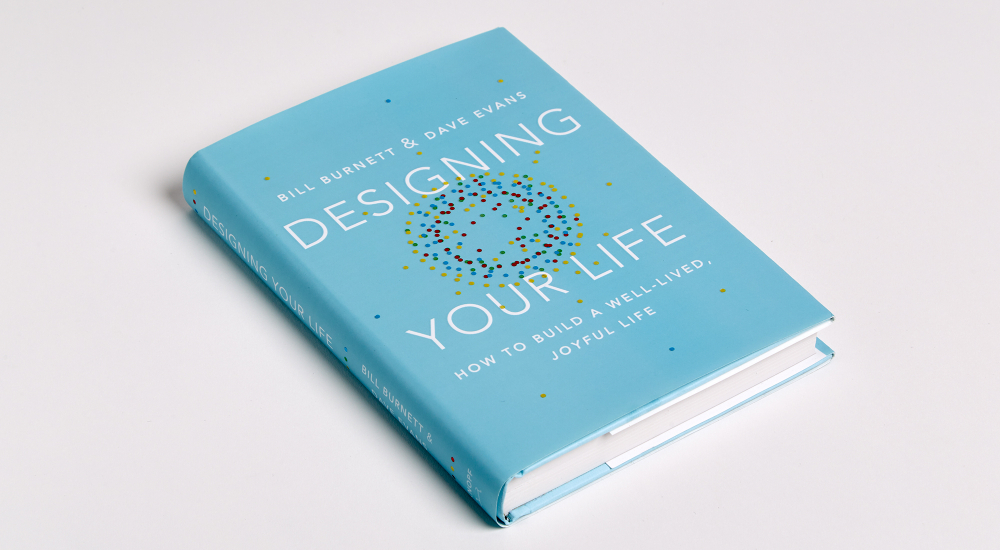
This book takes an introspective look at using design thinking to create a meaningful, fulfilling life. Design is all around us – from the devices we use to the homes we live in – and can be used to build our career, life, and find joy.

The Hawaiian practise of reconciliation and forgiveness, Ho’oponopono explores the concept of a deep connection everyone has with each other through the four tenets of creating peace: ‘I am sorry’, ‘Please forgive me’, ‘I love you’, and ‘Thank you’.

After an incident, a boy is trapped on a lifeboat with a hyena, orangutan, zebra, and a Bengal tiger. This book may be fictional but conveys lessons that reflect life and work all too well: the perseverance to survive, and finding your place with new comrades.

Many of us have a skewed perspective of success. Namely, one created for us by someone else. Instead of chasing those blueprints, Limitless teaches you to ignore the rules that limit you and uncover your own purpose and path to determine success on your terms.

One of the greatest football managers of all time, Leading takes a look at Sir Alex Ferguson’s years as a manager through all the facets of a business: hiring, firing, teamwork, managing expectations, responding to failure, and more.

When there are no words, leave it to body language. By learning to read and interpret nonverbal cues, you’ll be able to understand human behaviour better and use it in your favour.

After Eddie dies in an amusement park accident, he meets five people in heaven who have had the most impact on him while he was still alive. Some near and dear, others barely known – yet all of them have changed his life for better or worse. So, don’t take the connections and networks in life lightly, you never know who’ll be the one to shift your course in life.

Paul’s sudden diagnosis with Stage IV cancer transforms him from doctor to patient, wiping away the future he once envisioned with his wife. Faced with mortality and fatherhood, this memoir is a life-affirming reflection on the relationship between life and death.

If you never say yes, you never know what will happen! And that’s what Shonda did. By saying yes to the things that scared her; learning to explore, empower, and love herself truly. For the introverts and wallflowers who shy away from big decisions, this is your cue to say yes.
Nothing beats feeling the taut spine of a physical book and leafing through its pages. But books can be heavy to carry and take up space. Plus, there’s the risk of forgetting them on the way home, and some readers can be prone to motion sickness when reading on moving vehicles.
Fortunately, that piece of advanced technology in your hand (your phone) means quick and easy access to all the books on your must-read list. Simply download one of these good reading apps, and jump into a book or audiobook right away.
Cost: Free
Apple App Store: Download here
Google Play Store: Download here
Cost: Free
Apple App Store: Download here
Google Play Store: Download here
Cost: Free
Apple App Store: Download here
Google Play Store: Download here
Cost: Free
Apple App Store: Download here
Google Play Store: Download here
Cost: Free, upgrade to premium for $4.99/month or $44.99/year
Apple App Store: Download here
Google Play Store: Download here
Cost: Free for 3 articles per month, upgrade to premium for $5/month or $50/year
Apple App Store: Download here
Google Play Store: Download here
Cost: $9.99/month
Apple App Store: Download here
Google Play Store: Download here
Whether you read to be educated or entertained, it’s your prerogative. What’s important is that the quest for learning never stops. Some of the world’s most successful people are avid readers, so if you want to be a part of that circle, start by picking up a book.
Microsoft co-founder Bill Gates reads 50 books a year and has been an avid reader since childhood. So much that his father had to impose a ‘no reading’ rule at the dinner table. When reading, he suggests taking notes to ensure what’s being read is processed and understood. He even has his own book recommendation blog, GatesNotes.
Similarly, Oprah Winfrey grew up with books, saying that they were a path to freedom past her grandmother’s front porch. Her love for reading is evident with Oprah’s Book Club, and the fact that she never fails to find time to read before bed, no matter how busy she gets.
Time that has passed will never return, and all the more while commuting can you feel time ticking away. By making the most of it and doing things you enjoy that are just as beneficial, your commute is the perfect opportunity to expand your knowledge and hone your skills.
It doesn’t have to be anything complex. Read a book, listen to language classes, learn how to knit, or channel your inner peace and destress after a tiring day of work.
On the other hand, if you’re behind the wheel on your daily commute, you can still catch up on your reading with audiobooks and podcasts. There will be an indication of how long the chapter or series is so you can time it perfectly for it to end right when you reach your destination!